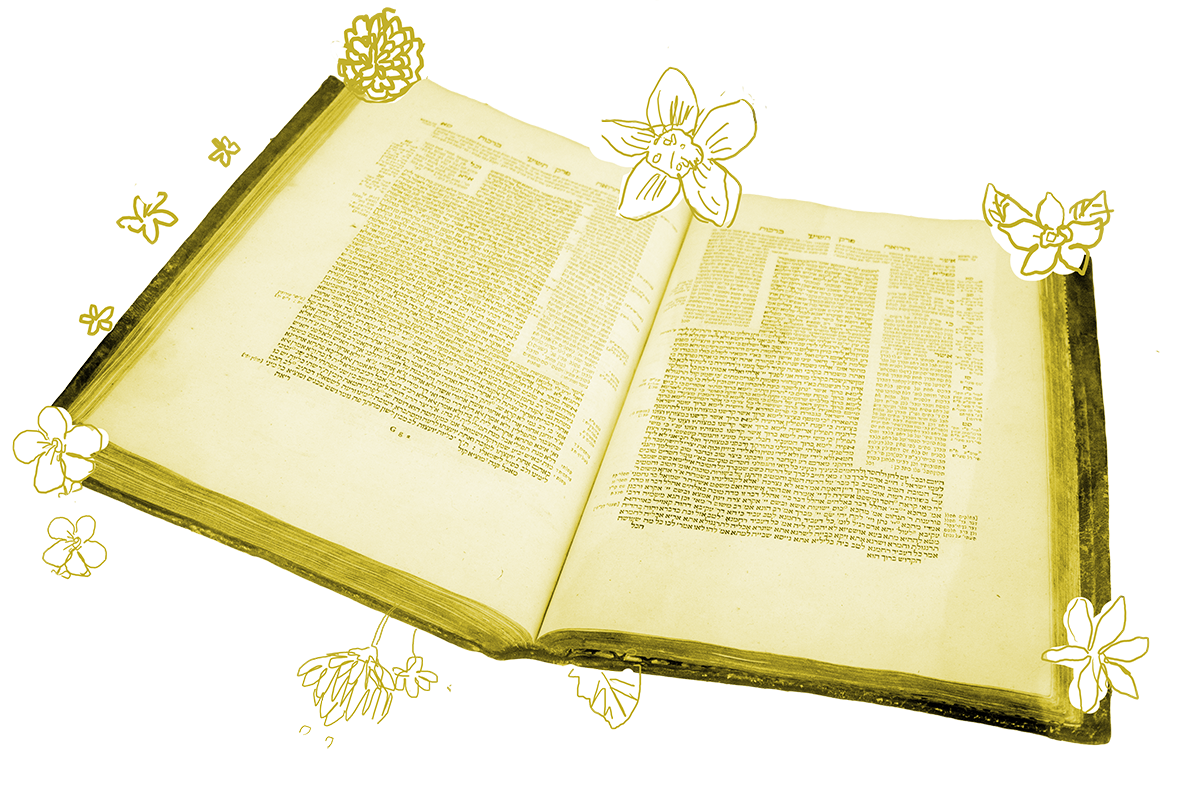Leviticus 21 teaches that the role of the kohen, the priest, was one passed down through the family line, from the first priest Aaron (Moses’ brother) all the way to the present day.
Priests had an important role when the Temple stood, offering sacrifices and performing other sacred rituals. Even today, many synagogues continue to recognize this ritual status by calling a kohen up to the Torah for the first aliyah, and having kohanim offer the priestly blessing weekly, monthly, or on holidays (depending on the community’s custom). According to the most plain reading of Leviticus 21, only men could be priests. But if priestly status was familial, and most families also have women in them, what is the status of the daughters of priests?
We learn in Leviticus 22:12–13 that a priest’s daughter can eat of the sacred food that her father brings home as long as she is a member of his household, but that this privilege does not continue if she marries a non-priestly man and moves into a non-priestly household. Leviticus 21:9 tells us the daughters of priests have a harsher penalty for sex-work than the daughters of regular Israelites.
But what about all the other responsibilities and rights of the priestly class? The Torah also teaches us that kohanim cannot marry converts or divorcees. They cannot contract corpse impurity for anyone outside the nuclear family (and even then, not for all members of their immediate family). They have heightened expectations of ritual purity. Do all of these rules apply to the women in priestly families as well?
With your help, My Jewish Learning can provide endless opportunities for learning, connection and discovery.
We started to answer these questions on yesterday’s daf. There, Rav Yehuda taught in the name of Rav:
It is not prohibited for daughters of priests fit to marry priests to marry men who are disqualified (from becoming priests).
In other words, the daughters of priests may marry men who are disqualified from becoming priests — due to their lineage or a visible disability. Today, we continue our exploration of the role of the priestly daughter by asking if the daughters of priestly families are prohibited from contracting corpse impurity like their fathers and brothers are.
Ritual impurity is a prohibition that is not equally applicable to all. Because the Merciful One writes: “Speak to the priests the sons of Aaron, and say to them: None shall defile himself.” (Leviticus 21:1) — meaning the sons of Aaron and not the daughters of Aaron.
To summarize the rabbis’ reading of Leviticus 21, then, women descended from the first priest Aaron are not themselves permitted to serve in the Temple (and thus would not get the honors still incumbent on priests in a post-Temple world), but they also are not bound by a number of the restrictions placed on male priests – including restrictions on who they can marry and how to mourn for those who have died (in other words, for whom they can contract corpse impurity).
Simple enough, right? Not so fast! In 1982, Dr. Bernadette Brooten (my undergraduate advisor) published a groundbreaking book, Women Leaders in the Ancient Synagogue, in which she analyzed 19 Jewish inscriptions from late antiquity. These inscriptions named specific women and followed their name with a religious title of some kind, titles like head of the synagogue, leader, elder — and priestess.
Brooten notes that this last title could mean that the women were part of priestly families, but notes that it could also mean that these women served a ritual or cultic function in their communities.
We know that not every Jewish community in late antiquity saw the rabbis as their authorities and don’t yet have historical evidence for what these women did or did not do in their community. But putting these inscriptions in conversation with today’s daf is a helpful reminder that real life is oftentimes more complicated than we see reflected in law and literature.
Read all of Yevamot 85 on Sefaria.
This piece originally appeared in a My Jewish Learning Daf Yomi email newsletter sent on May 31st, 2022. If you are interested in receiving the newsletter, sign up here.



